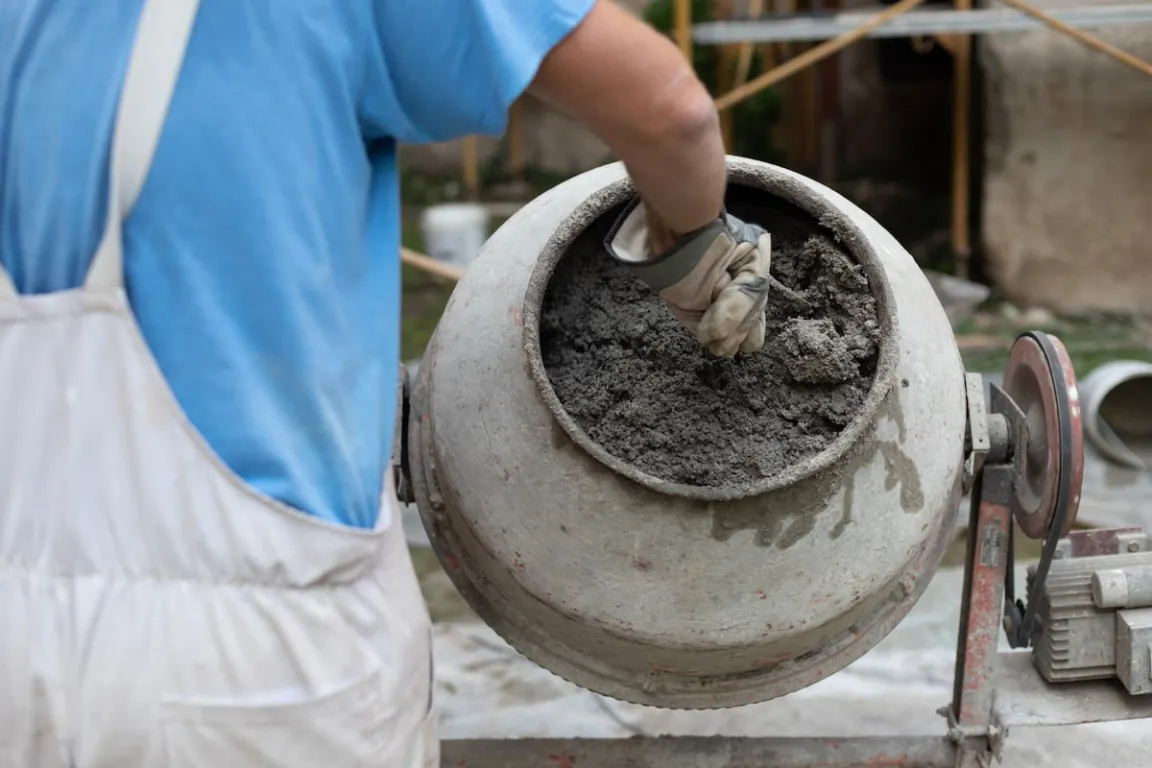Concrete has many different types of strength according to its ability to support the load. This type is called concrete quality. All concrete qualities have their own manual concrete casting measurements. Understanding concrete quality is important to calculate concrete casting cost per meter.
In the construction of structures, each of these concrete properties has a specific use, such as floor casting, two-story homes, multi-story office buildings, and so forth. Read through the thorough explanation below to gain a deeper understanding.
Several Manual Concrete Casting Measurements Based on SNI
Producing concrete casting mixture manually requires proper execution, especially on the amount of the materials. SNI 7394:2008 document about the procedure for calculating unit prices for concrete work for building and housing construction provides a complete guide.
If you are wondering about how much concrete casting you should mix, read some examples following SNI below. Memorize these comparison figures so that the concrete quality can be maintained.
1. Concrete Casting of 1:2:3
The first manual concrete casting measurement is for K175 concrete quality. This grade is usually used in mild construction, like non-structural floors or footpaths. This mixture has a pressure strength of up to 125 kg/cm2, making it suitable for light needs without structural reinforcement.
K175 quality concrete is made out of one part cement, two parts sand, three parts gravel, and 0.66 parts water. Thus, the proportions of gravel, sand, and cement are 1:2:3. Due to its ease of memorization, this ratio is frequently encountered.
2. Concrete Casting Measurement for K225 Grade
The next concrete casting measurement is K225 grade. This concrete quality is frequently used for basement and light supporting walls. It offers pressure strength of up to 225 kg/cm2, stronger than K175.
Because the comparison used is different, it is quite challenging to convert this quality of concrete to bucket units. It calls for more accurate computations using the laboratory's equipment. Don't worry, though, below are the measurements you can use according to SNI:
- Cement 371 kg.
- Sand 698 kg.
- Gravel 1047 kg.
- Water 215 liter.
3. Concrete Casting Measurement for K300 Grade
K300 concrete quality is suitable for main structures in more than 3-story and multi-story buildings. This concrete has a pressure strength of 300 kg/cm2, making it proper for heavy loads. You can mix the concrete with this measurement:
- Cement 413 kg.
- Sand 681 kg.
- Gravel 1021 kg.
- Water 215 liter.
Read also: How to Calculate Road Concreting Costs: A Complete Guide
How to Make a Perfect Concrete Casting Measurement Manually
There are a few crucial actions you need to take to obtain accurate manual concrete casting measurements. The uniformity, effectiveness, and caliber of the concrete produced are preserved by these procedures. Learn more about these suggestions.
1. Use the Right Tools
To get accurate concrete casting measurements, you should use the right tools, such as a shovel, bucket, and measuring cup. Make sure that all tools are clean and not contaminated with other materials affecting the concrete quality. The right tools will help you work and maintain the consistency of the mixture.
Read also: Construction Technology: Definition, Development, and Types
2. Learn the SNI’s Concrete Quality Table
The SNI 7394:2008 document gives complete details about the size of materials to make certain concrete quality.
Spend some time reading this text so you may modify the mix to fit the requirements of your project. You can note it as a comparative ratio table to make things easier.
3. Ensure Sand and Gravel Have Been Filtered
Material cleanness, such as sand and gravel, really impacts concrete quality. Before using them, you must filter them to remove mud, leaves, soil, and other waste. Clean materials ensure that the concrete will get optimal strength and are not cracked after drying.
4. Pay Attention to Water Ratio
To get the required strength, the concrete mix's water ratio is crucial. While too little water might make processing the mix challenging, too much water can weaken the concrete and make it more prone to cracking. To find the appropriate amount of water, see the SNI table.
5. Doing Slump Testing Before Casting
Slump testing is a simple way to check the suitability of the concrete mixture before use. By doing this test, you can find out whether your mixture is too watery or dry. The result is also documented in the SNI 7394:2008, ensuring that the concrete has the right quality and durability.
This is the information about manual concrete casting measurement for several stages of concrete grade. Concrete quality is determined by the concrete material ratio. Every concrete has its own function. This is important for professional contractors or construction to know this measurement.
In executing big-scale construction, you can order concrete casting with a certain quality without mixing it manually. But, it is also possible that your mixture is lacking materials. Thus, you can use Semen Merah Putih Watershield for making concrete casting.
Semen Merah Putih Watershield is a multifunction and high-quality cement suitable for various needs. Semen Merah Putih Watershield is proper for construction buildings needing extra protection, such as skim coating, plastering, concrete slab, and concrete casting.
Semen Merah Putih Watershield is completed with water-repellent technology strengthening houses with triple protection from water seepage from inside, outside, and the ground. That way, your house will be more durable, stronger, and low maintenance.
Are you doing a construction project? Choose quality cement with the best result! Use Semen Merah Putih Watershield for your house and any renovation requirements. Contact us for more information and make your building stronger!
Read also: Ready Mix Concrete: Types, Grades, and How to Make It



